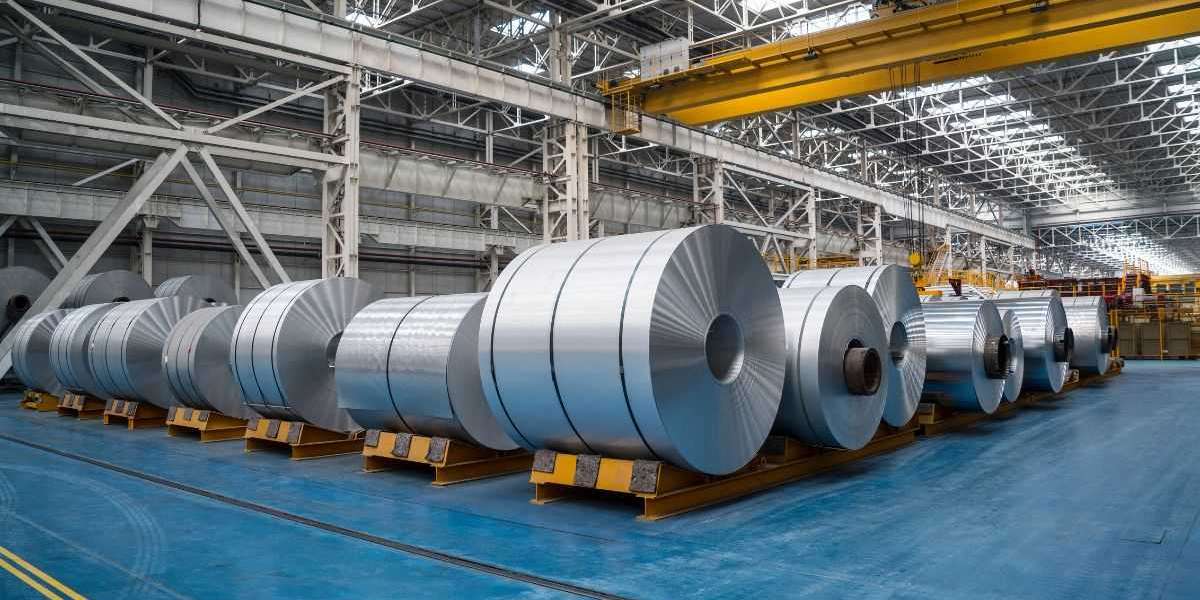The Australia steel market was valued at AUD 19.94 billion in 2024. The market is projected to grow at a compound annual growth rate (CAGR) of 2.90% from 2025 to 2034, potentially reaching AUD 26.54 billion by 2034, driven by the anticipated growth of the construction sector and the diverse applications of steel across sectors such as automotive, construction, and defense. Steel continues to be a foundational material in modern infrastructure, offering strength, durability, and flexibility across various industries. As Australia undergoes significant development and industrial expansion, the demand for steel remains strong, and its role in shaping the country’s economic landscape is more vital than ever.
Key Drivers of Growth in the Australian Steel Market
The growth of the Australian steel market is influenced by several interlinked factors that reflect both domestic and global trends. From infrastructure development to industrial applications, the demand for steel is expected to maintain a steady rise over the next decade. Here are the key drivers of growth in the Australian steel market:
Boom in the Construction Sector: One of the primary factors driving steel demand is the ongoing boom in the Australian construction sector. With significant investments in infrastructure, urban development, and residential housing, the construction industry is one of the largest consumers of steel. The Australian government has committed to a series of large-scale infrastructure projects, including road construction, public transport systems, and energy infrastructure. Steel is a crucial material in these projects due to its strength and ability to withstand environmental pressures.
Additionally, the construction of residential buildings, commercial real estate, and industrial facilities further increases steel consumption. As urbanization continues to accelerate, the need for durable and reliable construction materials like steel will continue to rise.
Infrastructure Upgrades and Public Investment: The Australian government has pledged substantial investments into infrastructure upgrades, including the development of highways, bridges, ports, and airports. Steel is the preferred material for many of these projects due to its high tensile strength, making it essential for both structural integrity and safety. Furthermore, the continued expansion of Australia's transportation networks, renewable energy projects, and public infrastructure will generate consistent demand for steel in the long term.
Expansion in the Automotive Sector: The automotive sector is another key contributor to steel demand in Australia. With the increasing production of vehicles and automotive parts, steel is widely used in the manufacturing of car bodies, chassis, and engines. Innovations in automotive design, such as lighter weight vehicles and the adoption of electric vehicles (EVs), are also driving the demand for advanced high-strength steel. Manufacturers are increasingly opting for steel variants that combine strength with lightweight properties to improve vehicle efficiency and fuel economy.
Defense Industry Growth: Australia's defense sector is another important contributor to the demand for steel. The government’s defense spending plans, which include the purchase of new military equipment and infrastructure, will continue to drive steel consumption. Steel is used in the manufacturing of military vehicles, ships, aircraft, and infrastructure critical to defense operations. As the Australian government continues to modernize its defense capabilities, demand for high-grade steel will see an uptick in the coming years.
Global Steel Market Trends and Trade: The global steel market plays a significant role in shaping the demand for steel in Australia. International steel prices and trade relations impact local steel manufacturers and consumers. Australia, being a significant importer of steel, is influenced by the supply-demand dynamics of the global market, including steel production in major steel-producing countries like China, India, and Japan. Price fluctuations, trade policies, and global supply chain dynamics can impact steel prices in Australia, affecting its consumption across industries.
Technological Advancements in Steel Production: The development of advanced steel manufacturing technologies is another factor that will support market growth. Innovations such as electric arc furnaces, continuous casting, and new steel alloys are allowing manufacturers to produce steel more efficiently and with a lower environmental footprint. These technologies not only reduce production costs but also enhance the quality and versatility of steel products. The shift toward more sustainable production methods will continue to benefit the steel market, particularly in a world increasingly focused on environmental issues.
Emerging Trends in the Australian Steel Market
As the steel industry adapts to changing market conditions, several emerging trends are expected to shape its future. These trends reflect the broader shifts in global industry standards, sustainability efforts, and consumer preferences.
Sustainability and Green Steel: As the world shifts toward more sustainable practices, the steel industry is under pressure to reduce its environmental impact. The production of traditional steel is highly energy-intensive and contributes to carbon emissions. However, there is increasing momentum toward "green steel," which uses renewable energy sources and low-emission technologies to reduce the carbon footprint. Companies in Australia and globally are investing in carbon capture and storage (CCS) technologies and the development of hydrogen-based steel production methods. These innovations will likely drive the future of steel production, allowing companies to meet growing demands while adhering to sustainability goals.
Recycling and Circular Economy: Steel is one of the most recycled materials in the world, and the trend of recycling is expected to continue in the Australian market. Steel recycling reduces the need for raw materials, conserves energy, and lowers costs. The rise of a circular economy—where materials are reused and recycled to reduce waste—has further strengthened the role of steel recycling in Australia. This trend not only helps to reduce the environmental impact but also promotes the efficient use of resources. As more industries move toward sustainable manufacturing practices, the demand for recycled steel will increase.
Advanced Steel Alloys: Another emerging trend in the Australian steel market is the development of advanced steel alloys that cater to specific industry needs. Steel manufacturers are focusing on producing alloys that offer enhanced properties such as higher strength, corrosion resistance, and lighter weight. For instance, high-strength, low-alloy (HSLA) steel is increasingly used in construction and automotive applications due to its combination of strength and weight reduction. These advanced materials allow businesses in various sectors to meet evolving performance standards, making them highly sought after in Australia's growing industries.
Digitalization in Steel Manufacturing: The adoption of digital technologies, such as artificial intelligence (AI), big data analytics, and the Internet of Things (IoT), is revolutionizing the way steel is produced. These technologies enable real-time monitoring, predictive maintenance, and optimization of production processes. Manufacturers can improve their efficiency, reduce waste, and deliver higher-quality steel products. The adoption of digital tools is also contributing to the automation of production lines, increasing output, and reducing operational costs, which will benefit both producers and consumers in the Australian market.
Challenges Facing the Australian Steel Market
While the future looks promising for the Australian steel market, there are several challenges that need to be addressed:
Raw Material Price Volatility: The price of raw materials used in steel production, such as iron ore and coal, is volatile and largely determined by global market forces. Price fluctuations in these materials can lead to higher production costs, which in turn can impact the pricing of steel in the domestic market. Australian steel producers, who are reliant on imported raw materials, may face challenges in maintaining consistent pricing amid global supply chain uncertainties.
Environmental Regulations: As environmental regulations tighten, steel manufacturers in Australia may face increased compliance costs associated with emissions and waste management. Stricter regulations on carbon emissions may require companies to invest in cleaner technologies, which can add to production costs. While these efforts are necessary for sustainability, they may present short-term challenges for steel producers.
Global Trade and Competition: The steel industry is highly competitive, with global producers such as China and India dominating the market. The influx of low-cost steel imports can undermine domestic production and create pricing pressures. Trade policies, tariffs, and international trade relations will continue to play a critical role in shaping the competitive landscape of the Australian steel market.
Technological Upgrades: While technological advancements in steel production offer significant benefits, the adoption of new technologies requires substantial investment. Smaller players in the market may face challenges in upgrading their facilities to meet the latest standards in energy efficiency and sustainability. The need for continuous investment in innovation could present financial challenges for some producers.
Future Outlook
The Australian steel market is poised for steady growth over the next decade, driven by infrastructure development, increased demand in the automotive and defense sectors, and the rising focus on sustainability. As Australia continues to invest in its infrastructure and manufacturing capabilities, the steel market will benefit from these developments, with projected growth leading to an estimated value of AUD 26.54 billion by 2034.
Technological advancements, including digitalization, sustainable steel production, and recycling, will play a key role in shaping the future of the market. Additionally, Australia's focus on integrating renewable energy and green technologies into its industrial base will encourage innovation in the steel sector, creating new opportunities for both manufacturers and end-users.












